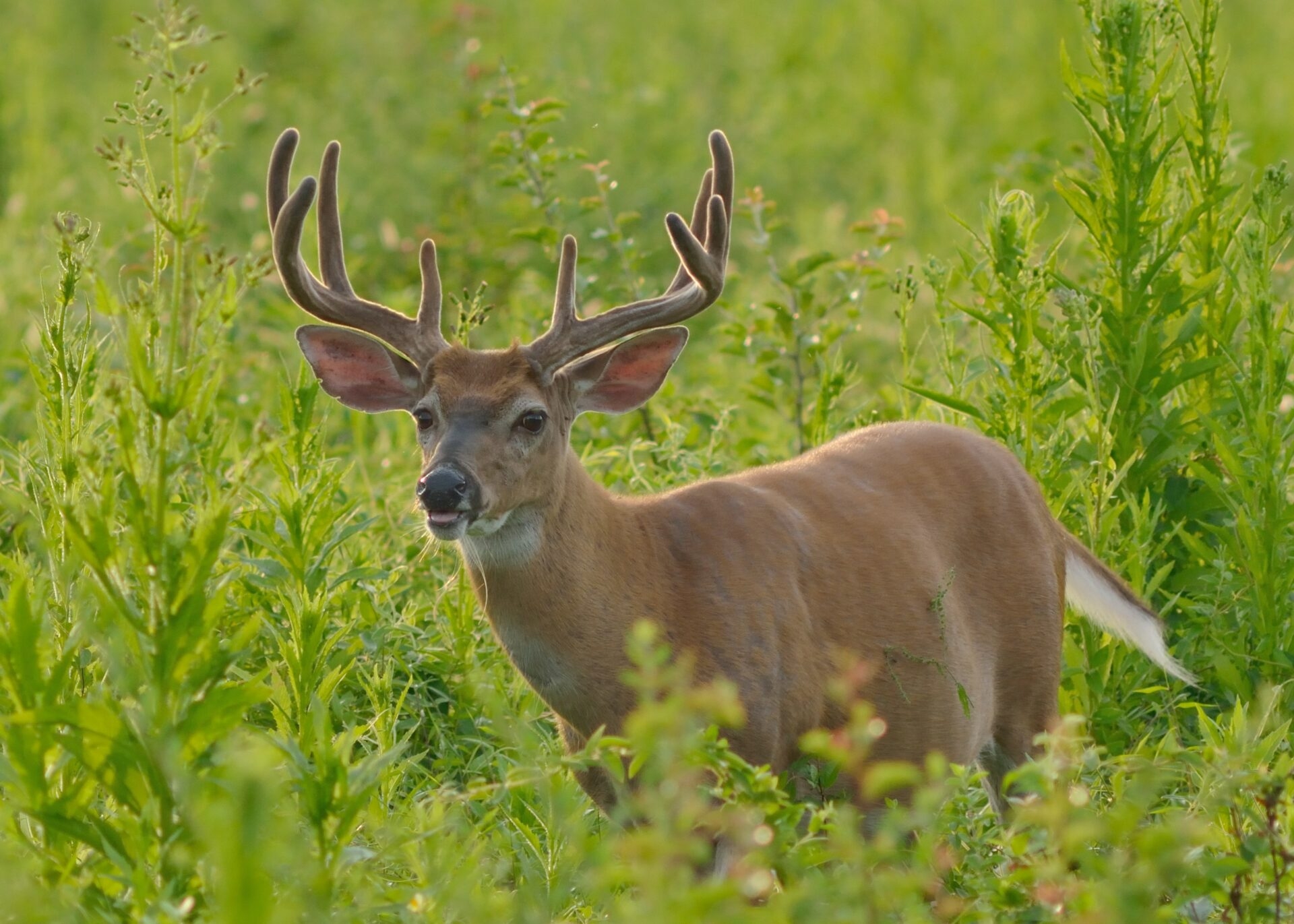deer management
Our controlled hunting program operates from mid-September through January at most of our nature preserves. This program is an essential part of our land stewardship work.
finding balance
Controlled hunting of white-tailed deer protects the ecological balance of our nature preserves. Only approved, active members of our controlled hunting program may hunt on our preserves. Hunters must apply to participate in the program, complete training and proficiency testing, and comply with strict safety protocols.
Natural Lands is not accepting any new hunters for our PA properties, nor are we adding names to our waiting list. For our New Jersey properties, please call 856-825-9952.
Note: Trapping is prohibited. Fishing is allowed at select preserves only. Please refer to preserve pages for details.
faqs
First, a little background about our land stewardship philosophy. Our first priority is to steward the land we own with a goal of restoring habitats and fostering diverse ecosystems for plants and wildlife to thrive. This takes a lot of hands-on work by our team of land stewards, who are experts in their field. It is not a matter of passive management; without active management these properties would be dominated by invasive plants with little to support native insects—the foundation of the food web on which we all depend. We’ve learned a lot about managing large tracts of land over the decades… in fact, we even wrote a book about it.

Without deer management, our preserves would all look something like this: a few remaining trees and invasive stiltgrass, with no seedlings or shrub layer.
Photo by David Steckel
Populations of white-tailed deer in our region are about 10 times greater than the land can support. This is an unsustainable level and will mean the forests as we know them will disappear as hungry deer eat all the native species, leaving only non-native plants to grow and take over.
For example, more than 100 species of native wildflowers have become extinct as a result of deer browse. The resulting lack of cover, food, and structural diversity within our forests has undoubtedly reduced populations of birds and other wildlife as well.
Natural Lands has operated our controlled hunting program safely for decades. Hunters must apply to participate in the program, complete regular training and proficiency testing, and comply with strict safety protocols.
Preserve visitation and hunting do overlap, though our hunters are generally more active at dawn and dusk and they avoid hunting near hiking trails (as hikers scare away deer). Some visitors chose to wear blaze orange during their visits. As always, dogs must be kept on leash and stay on trails.
Select preserves are closed to visitors for a short time during hunting season.
Depending on the hunters and the season, there may be both archery and firearms hunting on the preserves.
Though there are other methods to reduce deer populations, numerous studies have proven that removing deer through controlled hunts is the most practical and effective means for addressing overpopulation. The rules governing Natural Lands’ hunting program place an emphasis on removing does. Doe harvesting brings populations to tolerable levels more quickly than a random removal strategy.

